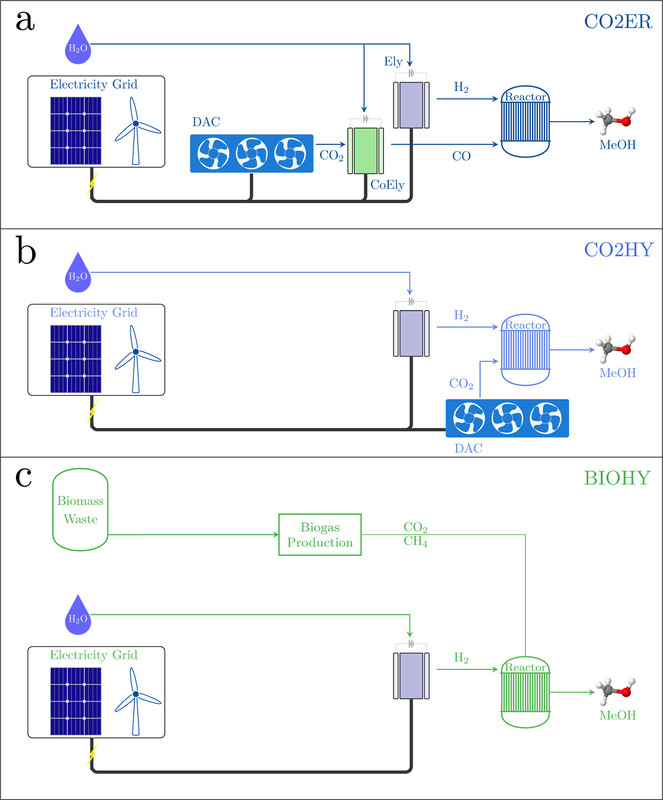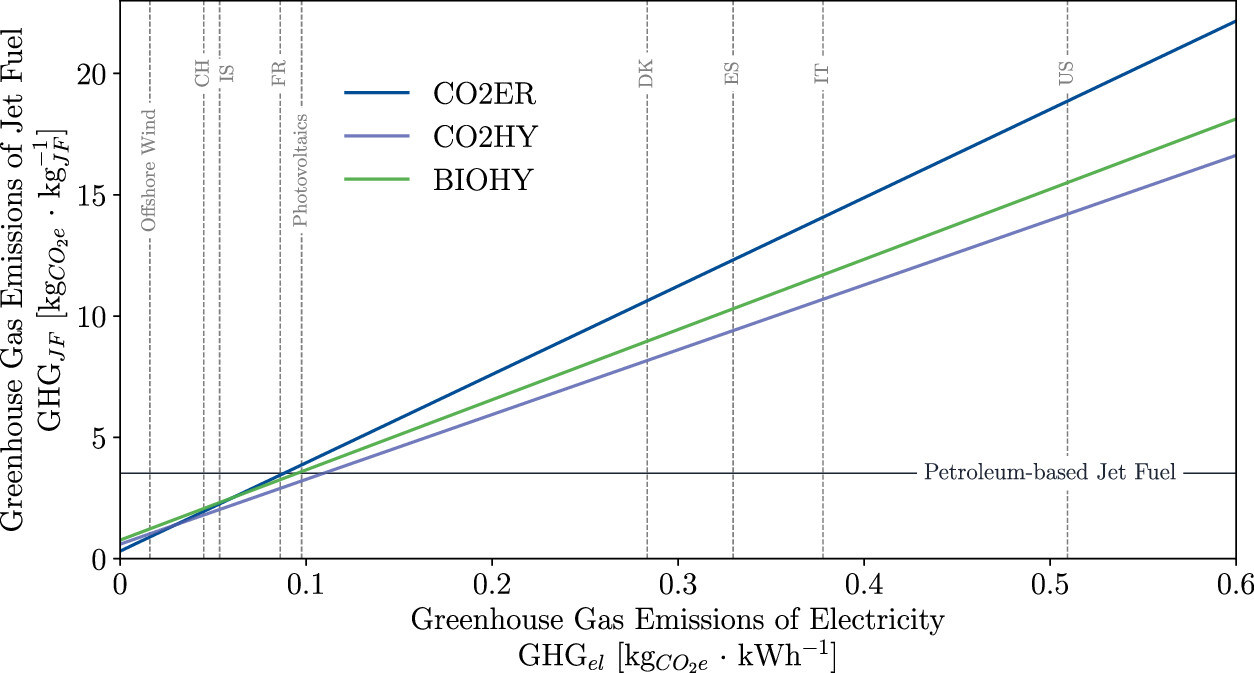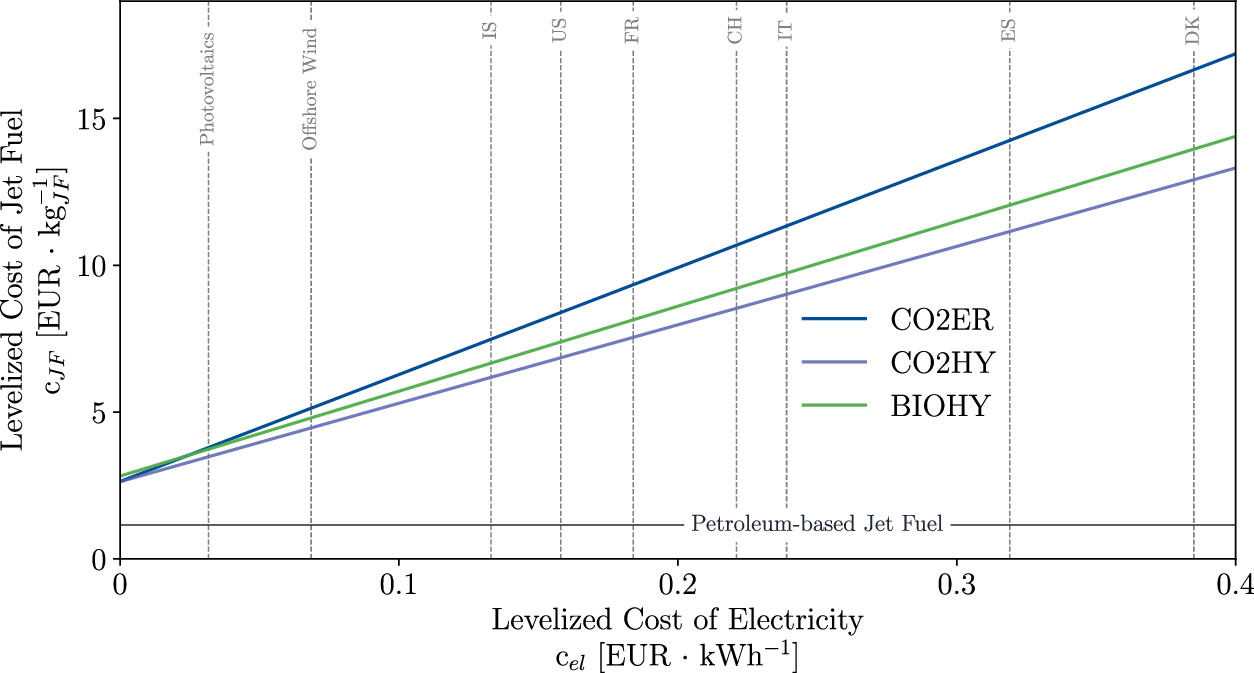Science
Related: About this forumLife Cycle Economic and Environmental Assessment of Producing Synthetic Jet Fuel Using CO2/Biomass Feedstocks
The paper to which I'll very briefly refer, with some measure of disgust, in this post is this one: Life Cycle Economic and Environmental Assessment of Producing Synthetic Jet Fuel Using CO2/Biomass Feedstocks Dimitri M. Saad, Tom Terlouw, Romain Sacchi, and Christian Bauer, Environmental Science & Technology 2024 58 (21), 9158-9174.
I'm sure that in the past I've written about a technology that seems feasible at least for the FT (Fischer-Tropsch) based carbon neutral production of jet fuel using electricity, this one: Feasibility of CO2 Extraction from Seawater and Simultaneous Hydrogen Gas Generation Using a Novel and Robust Electrolytic Cation Exchange Module Based on Continuous Electrodeionization Technology Heather D. Willauer, Felice DiMascio, Dennis R. Hardy, and Frederick W. Williams Industrial & Engineering Chemistry Research 2014 53 (31), 12192-12200. Dr. Willauer is a scientist at the Naval Research Laboratory, and this work is directed at making FT jet fuel at sea for aircraft carriers using excess electricity from their nuclear reactors. Nevertheless, this technology relies on an electricity intermediate, and in all cases, electricity is a thermodynamically degraded form of energy. One loses energy whenever, under any and all circumstances, when one generates electricity. This said, the seawater intermediate is preferable for the removal of environmental CO2 to efforts at direct air capture (DAC) of CO2 because of the volumetric density, and it might be viable approach where electricity is used to recover thermal energy that might be otherwise rejected to the atmosphere.
The authors of the paper cited at the outset start off well enough, describing the nature of jet fuel, and arguing that any approach to making its carbon impact smaller will require FT synthesis, at least for the short term:
Synthetic jet fuel-related LCA studies have typically focused on GHG emissions and land use, (21) and results mostly depend on the production pathway utilized and the used feedstocks. (21,22) The studies that evaluate synthetic jet fuels mainly consider two feedstocks: biomass derivatives (5,12,16,22−25) and pure CO2. (20,26−28) Current LCA literature basically agrees that biomass-based synthetic jet fuels most often cause significantly lower life cycle GHG emissions than petroleum-based fuel, as long as biomass use does not result in substantial land use-related GHG emissions. (23,24,29−32)...
The first graphic in the paper, however, regrettably treats what won't work as if it might work in what has become faith based de rigueur evocation of unreliable and thus unsustainable (dirty) energy that is dependent on fossil fuels. Specifically, the claim is that using so called "renewable energy" one can manage industrial plants at a billion ton scale to recover carbon dioxide from the air, or (even more absurdly) use sewage sludge, or biomass
To wit, graphically:

The caption:
Note that the caption lists only some of the absurd handwaving in these processes, "heat exchangers, compressors and separators" are not shown. Reference to the fact that these processes involve heat, which is not generally producible from wind and solar crap except by thermodynamically obscene electric heaters, is oblique.
Note that the process proceeds through a methanol intermediate, followed by the MTO (methanol to olefins) process and finally condensation reactions, each requiring reactor infrastructure, catalysts, and, heat.
As such, the paper already borders on science fiction; after the expenditure of trillions of dollars on solar and wind in the last 10 years, they remain trivial forms of energy dependent on continuous production of replacement units requiring, for their manufacture and installation and maintenance, heat.
There is not much else to say, except that the authors finally acknowledge that there are only a few countries in the world that actually have carbon intensity low enough to make such a process be less dirty than petroleum from a carbon dioxide intensity perspective:

The caption:
Referring to the figure, the text makes its only reference to the only sustainable form of reliable continuous carbon free scalable energy there is, nuclear power:
The reference to so called "renewable energy" schemes in this figure is dishonest in the extreme. One cannot operate and shut industrial plants dependent on heat flows arbitrarily based on the time of day and the weather, or at least one cannot do so in any remotely economic sense. It's tooth fairy stuff, figure 1 in the paper as well as the inclusion of offshore wind in figure 8.
We hear a lot of bourgeois whining here and elsewhere about what is and what is not "too expensive." From my perspective, global heating is the main energy related issue that is "too expensive." Figure 9 in the paper shows the cost of these schemes relative to fossil fuel based jet fuel, again with the very dubious (at the border of an outright) lie that one can run an industrial plant on intermittent energy:

Somewhat dated estimates of the Willauer "seawater to jet fuel" process place costs at around $6/gallon for jet fuel. This process, again, depends on thermodynamically degraded electricity. I can argue that thermal processes, now accessible with advances in materials science, using nuclear energy might be cheaper, albeit not as cheap in direct costs of allowing dangerous fossil fuel waste to be dumped into the atmosphere, which is now a huge planetary scale waste dump. This cost would certainly be offset by the unacceptably high cost of global heating and the health costs of other forms of air pollution, not that this appeals to bourgeois thinking that only direct costs matter. I can argue this, and have argued this, but will spare any readers of this now; I'm out of time.
Enjoy the coming work week.
jeffreyi
(2,053 posts)A massive scam. This facility was never completed or operated, and was/is a massive public money pit. Furthermore, even though our dry forests are a fire prone mess, there isn't enough biomass around here to feed a facility like that for more than a year or so. So they had a plan B, apparently. They located themselves very close to a big natural gas pipeline. Which sort of defeats the purpose.
NNadir
(34,657 posts)...one way or another, biofuels largely because of their ammonia requirements from the Haber-Bosch process. The wind and solar industries would collapse in a New York minute without access to dangerous natural gas back up.
I would exclude geothermal and hydropower from this claim about gas dependency, but neither are infinitely expandable, and depending on approach, both can have a climate cost far higher than nuclear energy.
In the case of woody biomass, we are clearly not going to solve the world's climate problem by strip mining forests, and in any case, the result of uncritical faith in so called "renewable energy" is global heating: The very popular scheme failed. The result of the failure of this scheme is that forests are burning at a vast rate. We're losing them.
Another cost of so called "renewable energy" is the destruction of wilderness.
Thanks for the google suggestion. I hadn't heard of this case, but it's consistent with many others of which I have heard.